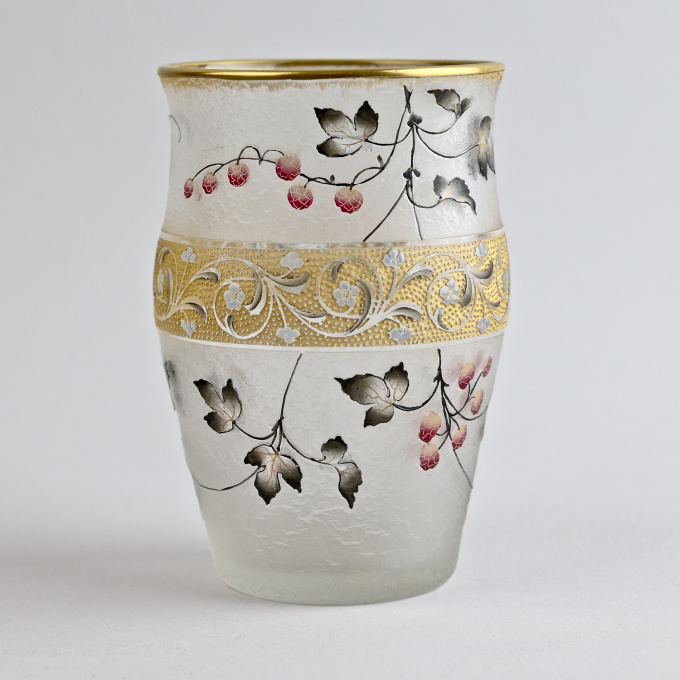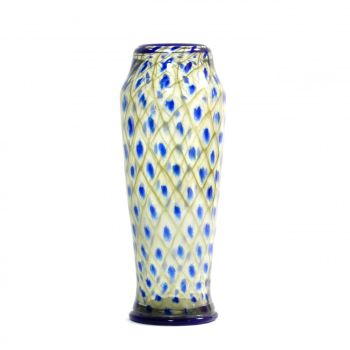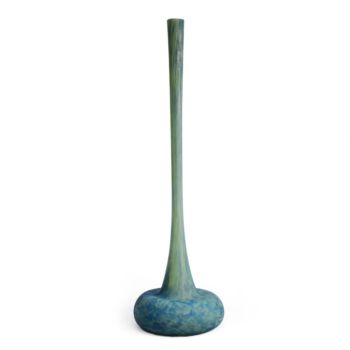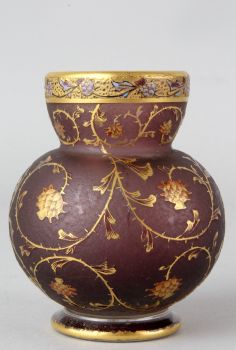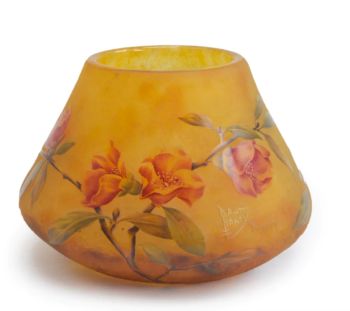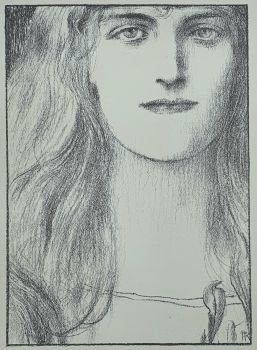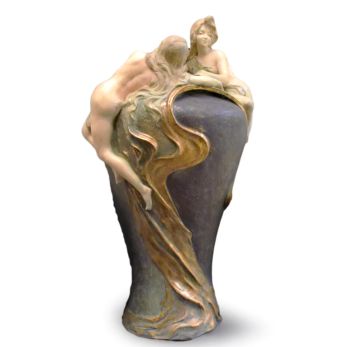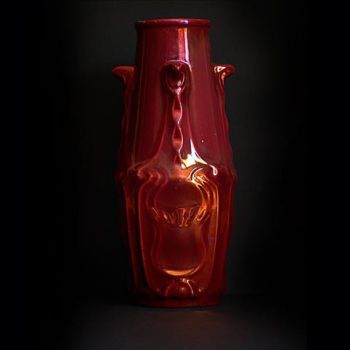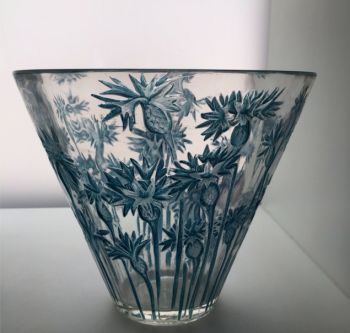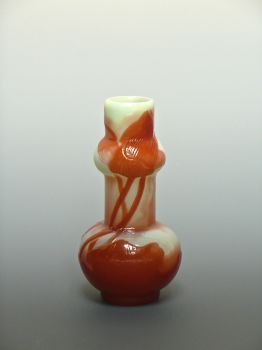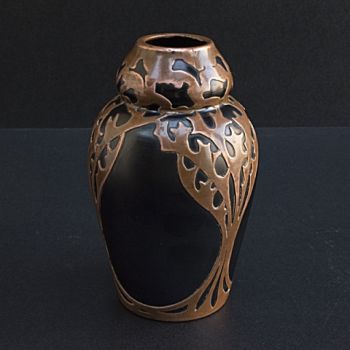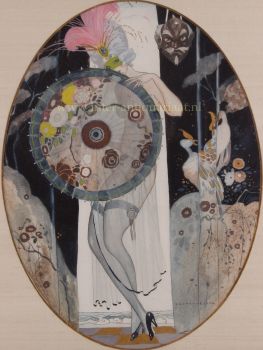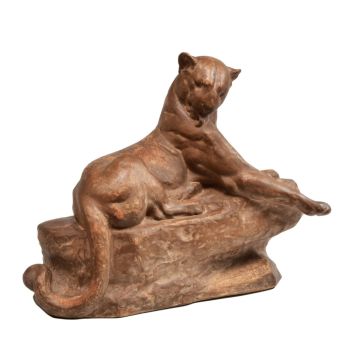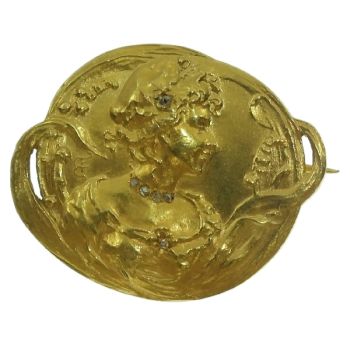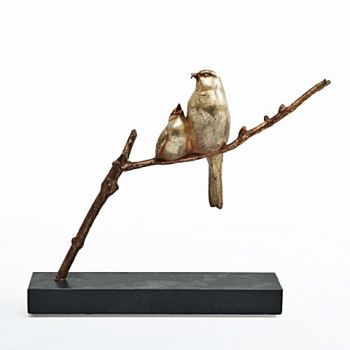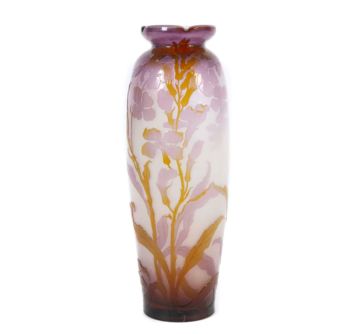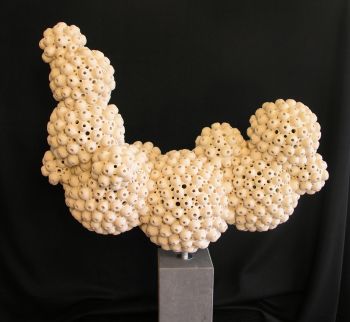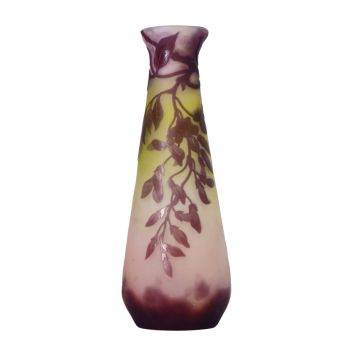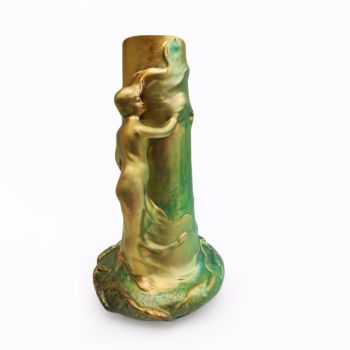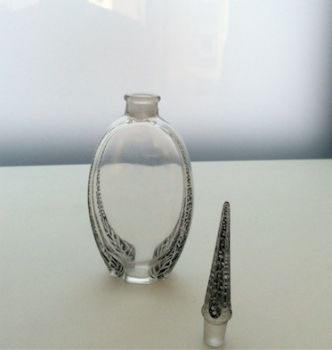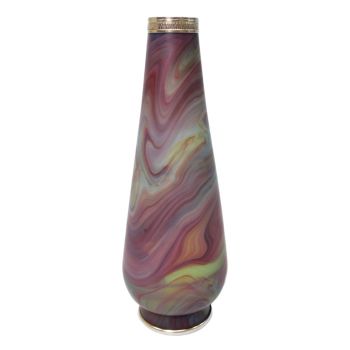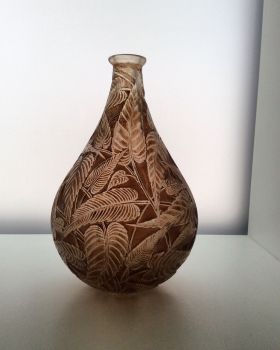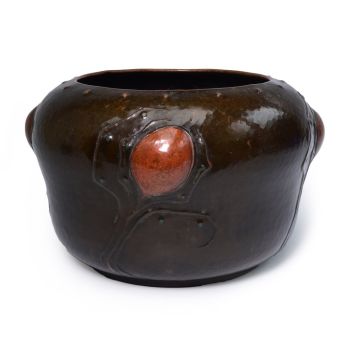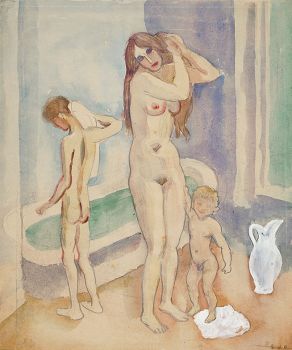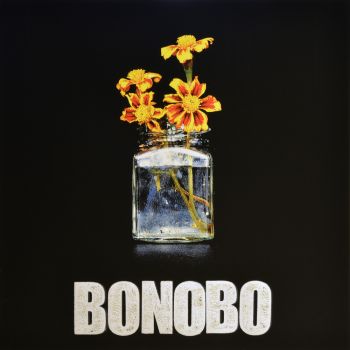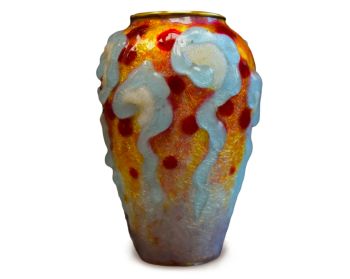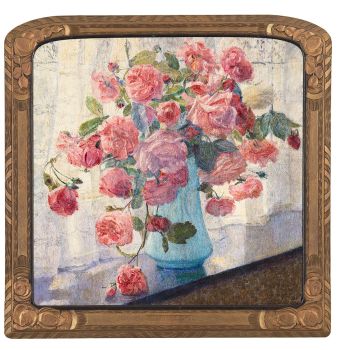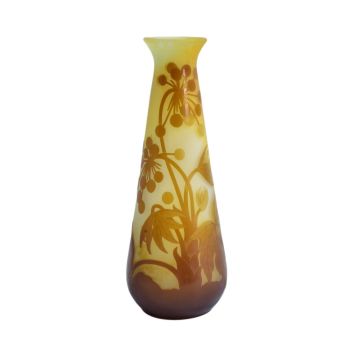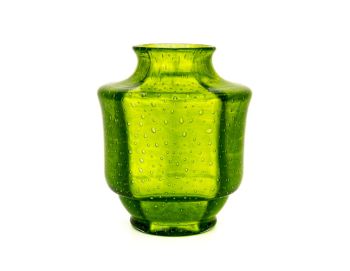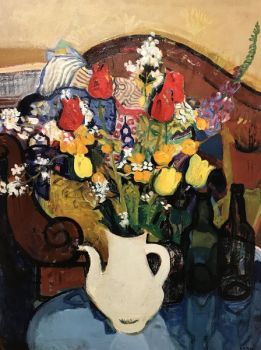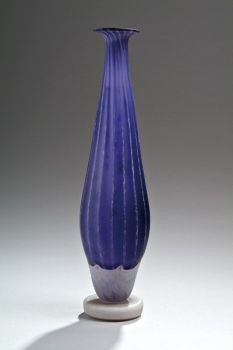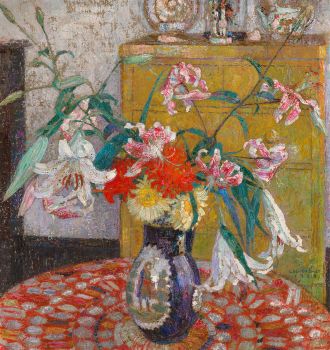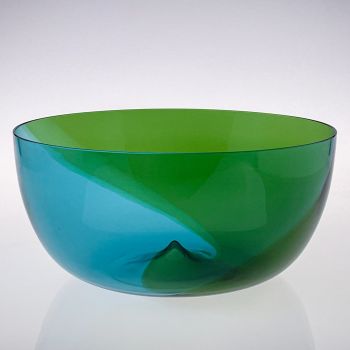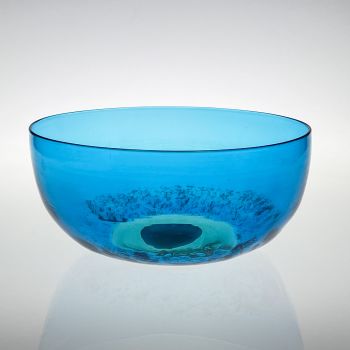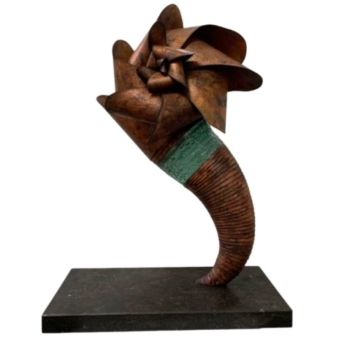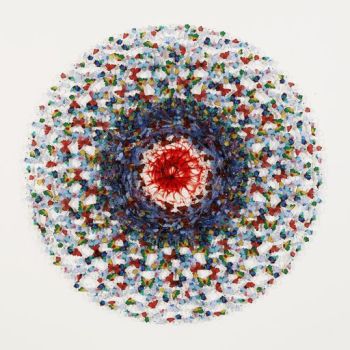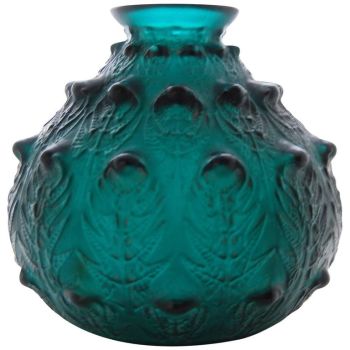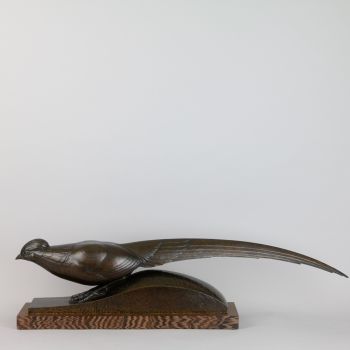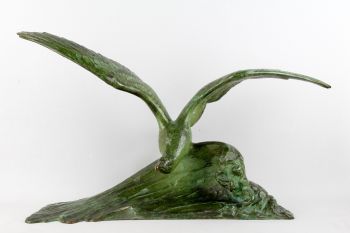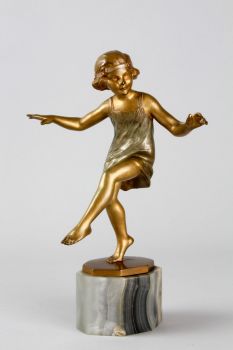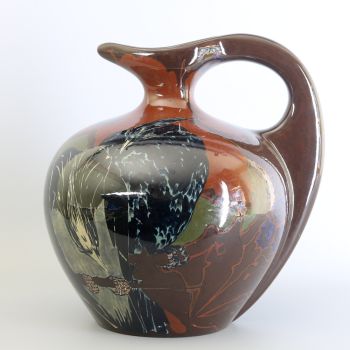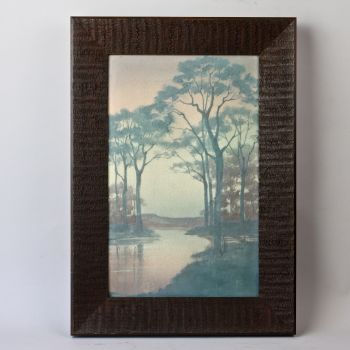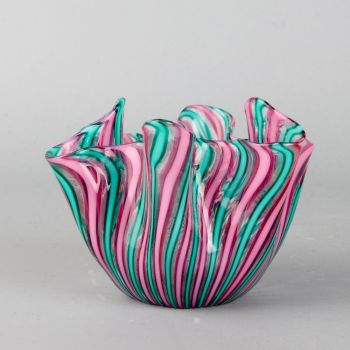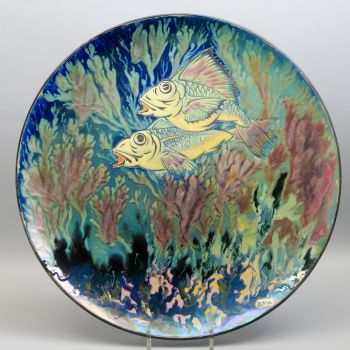Hop Tendrils, "Houblon" 1898 - 1900
Frères Daum
Glass
11.50 cm
ConditionMint
€ 2.200
Passage Arts
- About the artworkVery delicately executed frosted glass vase by Daum, Nancy with an etched and enameled decoration of hop tendrils made around 1898. Gold enameled frieze with etched and enameled decoration of stylized flowers Bijzonder fraai en gedetailleerd uitgevoerde vaas gemaakt bij Daum, Nancy met een geëtst en geëmaillerd decor van hopranken uit ca. 1898.
Signed on the bottom Daum Nancy with cross of Lorraine in gold enamel.
Height: 11,5 cm - About the artist
Daum is a crystal studio in the city of Nancy, France.
It was founded in 1878 by Jean Daum(1825–1885).
His sons, Auguste Daum (1853–1909) and Antonin Daum (1864–1931), oversaw its developing success during the burgeoning Art Nouveau period.
Currently Daum is the only commercial crystal manufacturer employing the pâte de verre (glass paste) process for art glass and crystal sculptures, a technique in which crushed glass is packed into a refractory mould and then fused in a kiln.
During the Universal Exhibition of 1900 Daum was awarded a ‘Grand Prix’ medal. Daum glass became more elaborate, acid etching (by Jacques Gruber) was often combined with carving, enamelling and engraving on a single piece of glass to produce creative glass master-pieces.
The most complicated creations also feature applied glass elements, such as handles and ornamental motifs in naturalistic forms. The Daum brothers quickly moved on to become one of the major forces in the Art Nouveau movement, seriously rivalling Gallé, so much so that when Émile Gallé died in 1904 they became the leaders in the field of decorative glass.
In 1906 Daum revived pâte de verre (glass paste), an ancient Egyptian method of glass casting, developing the method so that by the 1930s Daum's window panels used pâte de verre for richness instead of leaded or painted glass. Today Daum still used this method to produce their pieces.
Are you interested in buying this artwork?
Artwork details
Related artworks
Frères Daum
Daum Nancy – “Paysage Soleil Couchant” vase with two applied handles1900 - 1910
Price on requestAntiques Emporium
1 - 4 / 8René Lalique
An early vase 'Bluets' designed by Rene Lalique (1860-1945)1910 - 1920
Price on requestLennart Booij Fine Art and Rare Items
1 - 4 / 24Frères Daum
Daum Nancy – “Paysage Soleil Couchant” vase with two applied handles1900 - 1910
Price on requestAntiques Emporium
1 - 4 / 24Herman Bogman jr.
Flower still life of a nasturtium in a blue vase1950 - 1965
Price on requestAdelwein Kunst
Gabriel Argy-Rousseau
Gabriël Argy-Rousseau – Crabes et Algues vase – 19201920 - 1929
Price on requestAntiques Emporium
1 - 4 / 24René Lalique
A very rare deep green ‘Fougeres’ Vase designed by R. Lalique1912
€ 8.950Lennart Booij Fine Art and Rare Items
 Curated by
Curated bySilla Scheepens
1 - 4 / 24- 1 - 4 / 12

